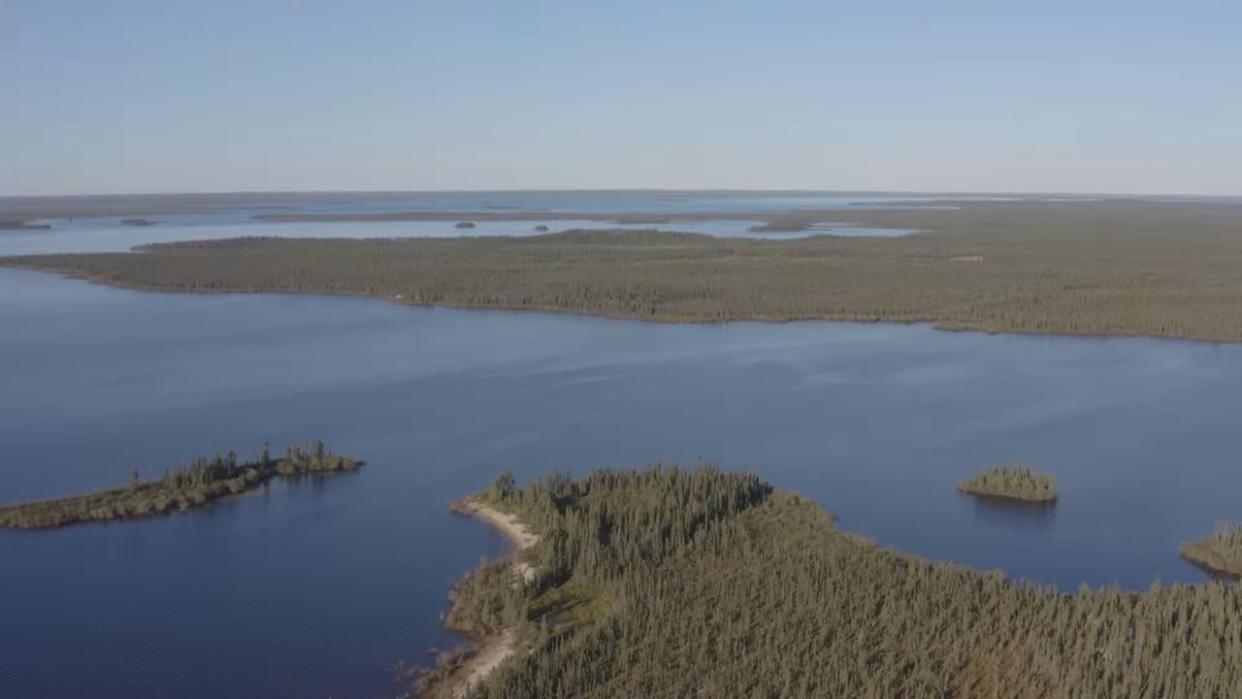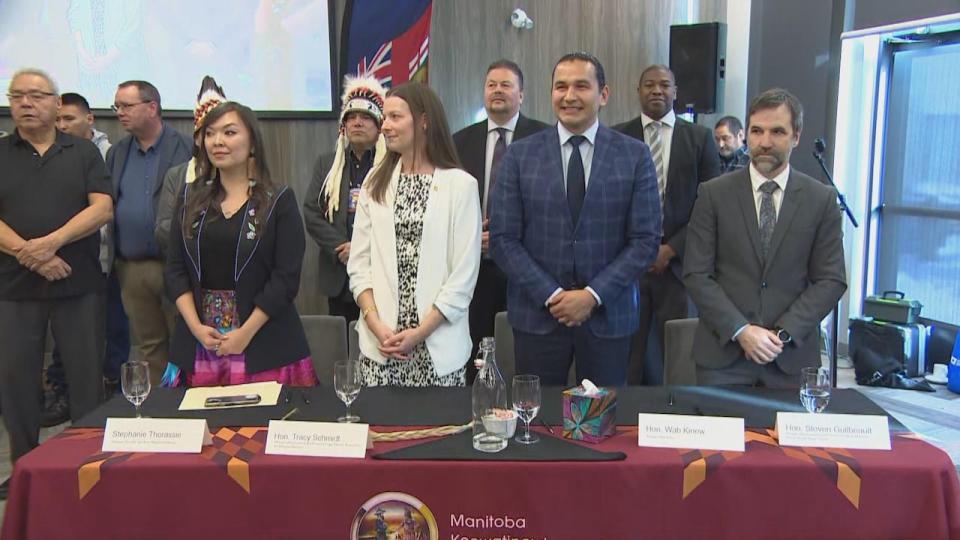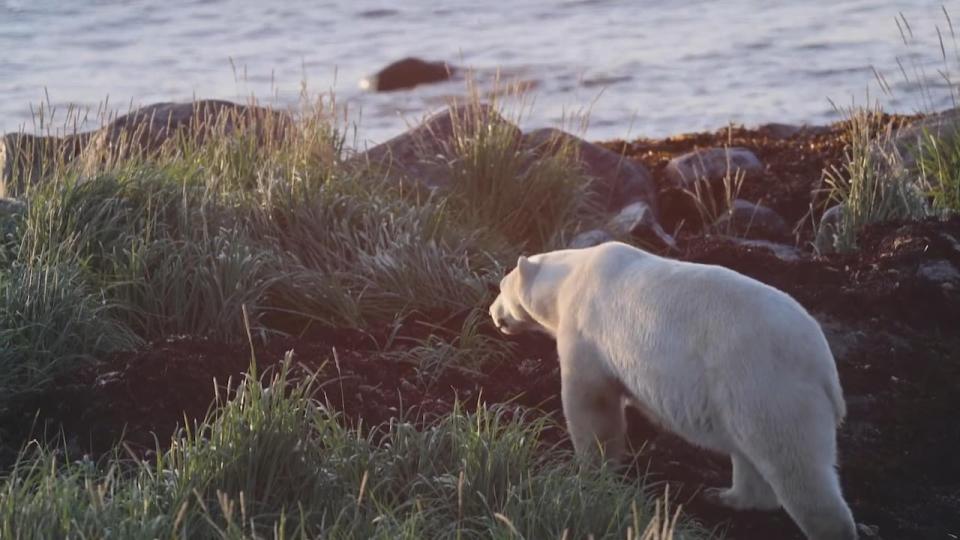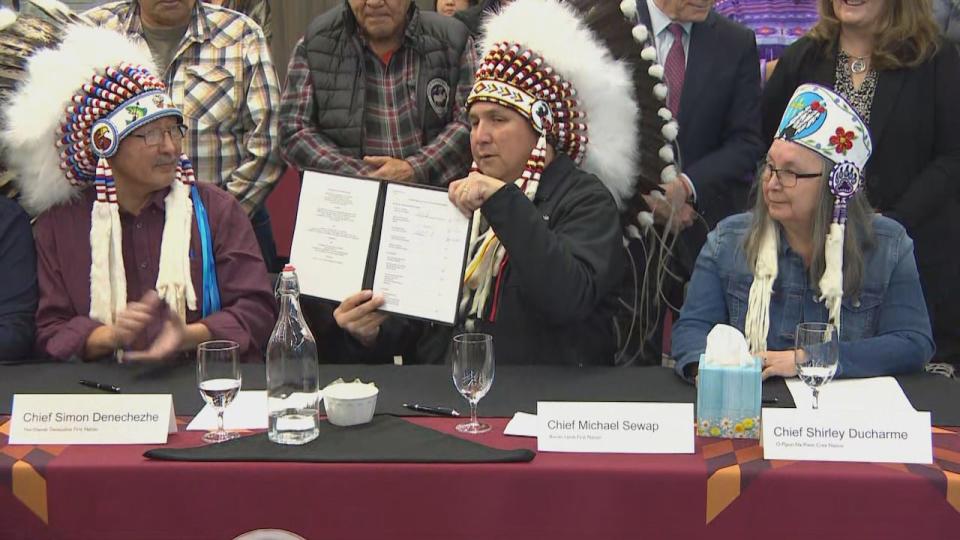Manitoba First Nations, governments sign deal to study protection of pristine Seal River watershed

Representatives from Indigenous communities in Manitoba say they're proud to lead the way in protecting one of the few large untouched stretches of land in Canada.
The Manitoba and federal governments and the Indigenous-led Seal River Watershed Alliance have signed an agreement to study making the huge expanse of land west of Churchill officially an Indigenous protected area — and possibly a national park reserve.
The Seal River watershed is located in the Taiga Shield in northern Manitoba, between the boreal forest and the tundra. It's one of the largest ecologically pristine watersheds in the world, and one of its richest carbon sinks.
Stephanie Thorassie, the executive director of the alliance, was at the signing of the agreement Thursday, which was also attended by Premier Wab Kinew and federal Environment Minister Steven Guilbeault.
"For so long outsiders dictated where we live, where we went to school, how we wore our clothes, our hair, what language we spoke. Now our communities are standing up and defining how we're going to care for these lands and waters," Thorassie said.

Seal River Watershed Alliance executive director Stephanie Thorassie, left, provincial Environment Minister Tracy Schmidt, beside her, Premier Wab Kinew, and federal Environment Minister Steven Guilbeault, right, attend the signing. (CBC)
"This is an Indigenous-led initiative.... Instead of our knowledge being an amendment at the back of a report, we are holding the pen to this report. And this is what's so powerful and so important about this moment."
'A new type of development'
During the UN's COP15 biodiversity conference in Montreal in late 2022, the federal and provincial governments announced they were partnering with the watershed alliance, which is made up of four First Nations who call the area their ancestral land, to do the study.
Guilbeault said progress on the file stalled for months, until Manitoba's new NDP government — elected in last October's provincial election — decided to withdraw the land from future mining exploration.
"The previous [Progressive Conservative] provincial government, after the announcement at COP15, seemed less interested in ensuring that the project could move forward swiftly," he said.
Kinew said his government would be looking into mining in other areas of northern Manitoba, but not in the watershed.
He said the announcement was about Indigenous leadership and acknowledging land and water are sacred. But he added it was also about reconciliation — including economic reconciliation.
"This agreement paves the way for a new type of development in this region," Kinew said. "It is a type of development that would be fitting for eco-tourism and fitting for other opportunities like that to take place.
"But I want to say importantly, it is also about the cultural, social and spiritual development of young people in northern Manitoba and ensuring that every person in the region has the ability to … learn on the land from the elders an unbroken chain of knowledge that stretches back through the millennia."

There are at least 22 known species at risk living in the region, from polar bears to wolverines to orcas. (Seal River Watershed Alliance)
Thorassie said eco-tourism will provide jobs for the people living on the land, and that she hopes the watershed becomes a draw to the region, similar to eco-tourism in the neighbouring Churchill region.
Chiefs and elders of the Sayisi Dene, Northlands Denesuline, Barren Land and O-Pipon-Na-Piwin Cree, and Manitoba Keewatinowi Okimakanak Grand Chief Garrison Settee were also at the signing Thursday.
'This land is untouched'
According to analysis done by non-profit Ducks Unlimited Canada in 2021, the watershed holds 1.7 billion tonnes of carbon — eight years' worth of greenhouse gas emissions in Canada.
There are at least 22 known species at risk living in the region, from polar bears to wolverines to orcas.
The region as a whole spans over 50,000 square kilometres.
"Some people call it the middle of nowhere, but that's because this land is untouched. There are not many places left in the world that are lucky as we are," said Barren Lands First Nation Chief Michael Sewap.

Chief Michael Sewap holds the signed agreement. 'There are not many places left in the world that are lucky as we are,' Sewap said at the signing. (CBC)
"In the Seal River watershed, we have big open water, there are no permanent roads, no mines, no hydro. Instead we have clean water you can drink straight out from the river. We have moose, fish and venison. We have places our ancestors lived in and [were] buried."
Protecting it would help Canada move toward its target of conserving 30 per cent of its land and water by 2030. At the end of 2022, Canada had conserved 13.6 per cent of its land, and 14.7 per cent of its marine territory.
The NDP also pledged to meet that 30 per cent target. Kinew said the watershed would bump the percentage of protected land in the province from 11 to more than 18 per cent.
The funding for the feasibility study will come from the federal government. It will incorporate traditional knowledge and western science to explore the recommended boundaries or the area, Guilbeault said.
"Our ancestors protected the watershed for thousands of years," said Northlands Denesuline Chief Simon Denechezhe.
"We are carrying on the traditional ways in a modern way. We are building towards a future of healthy land, healthy people and healthy economies."
The watershed alliance is aiming to complete the study in two years.


